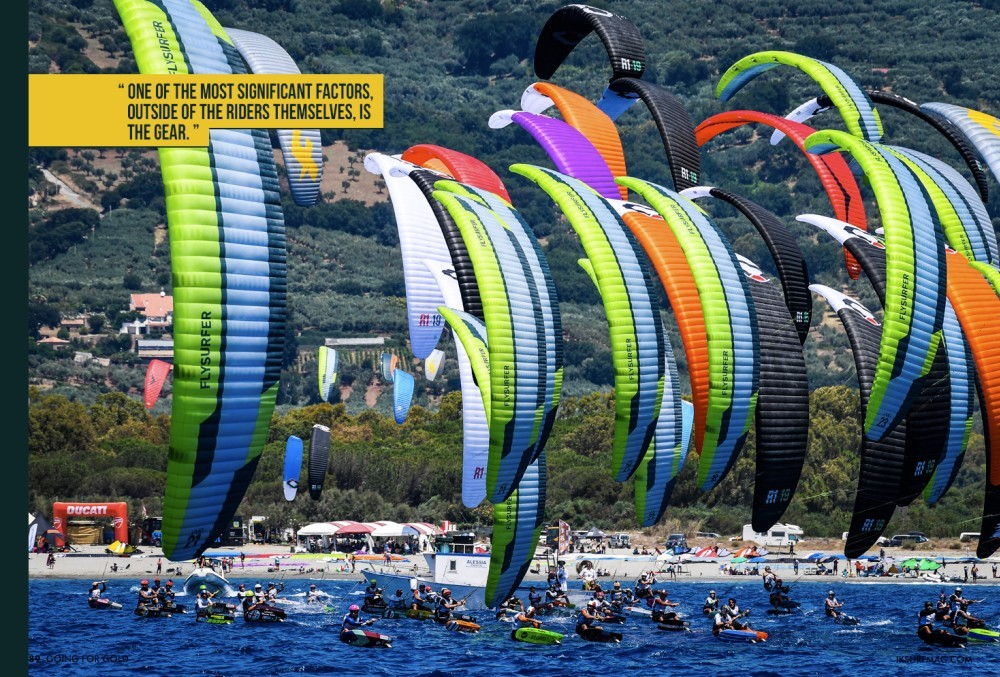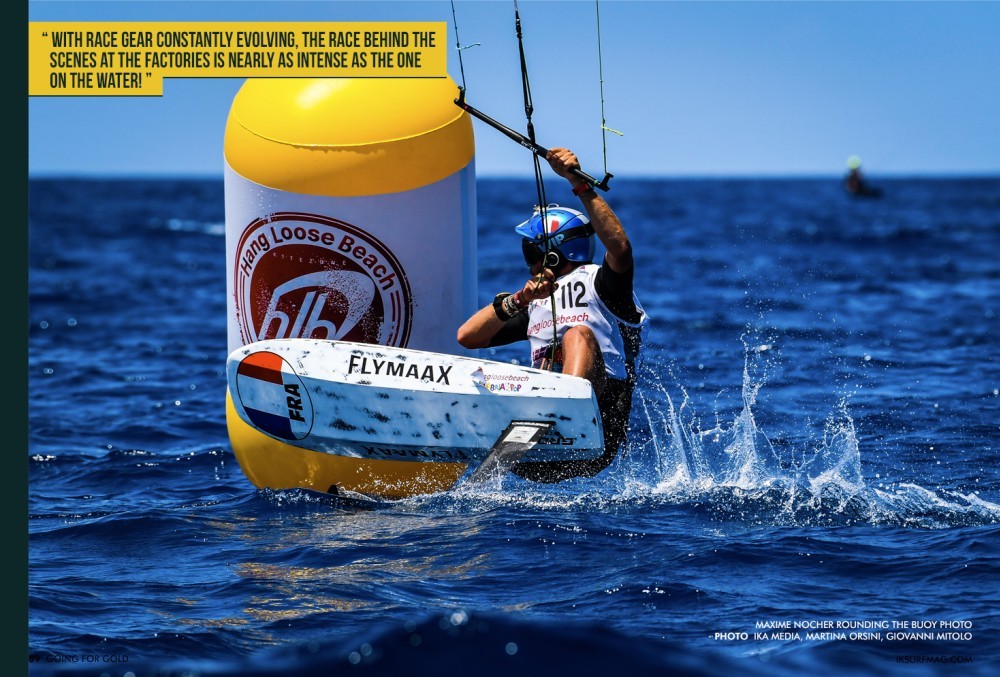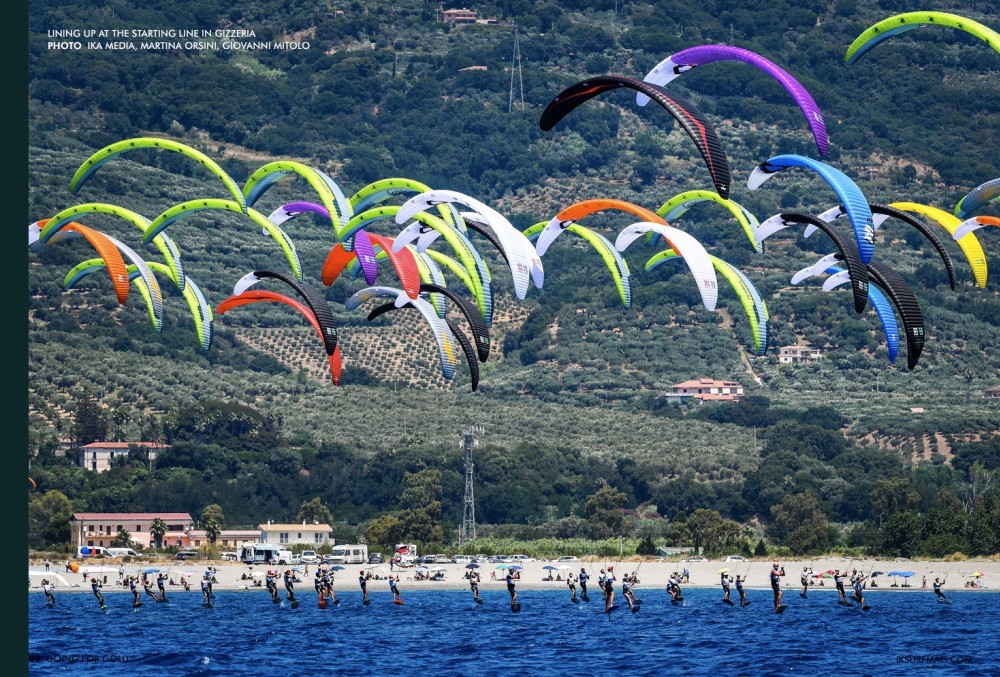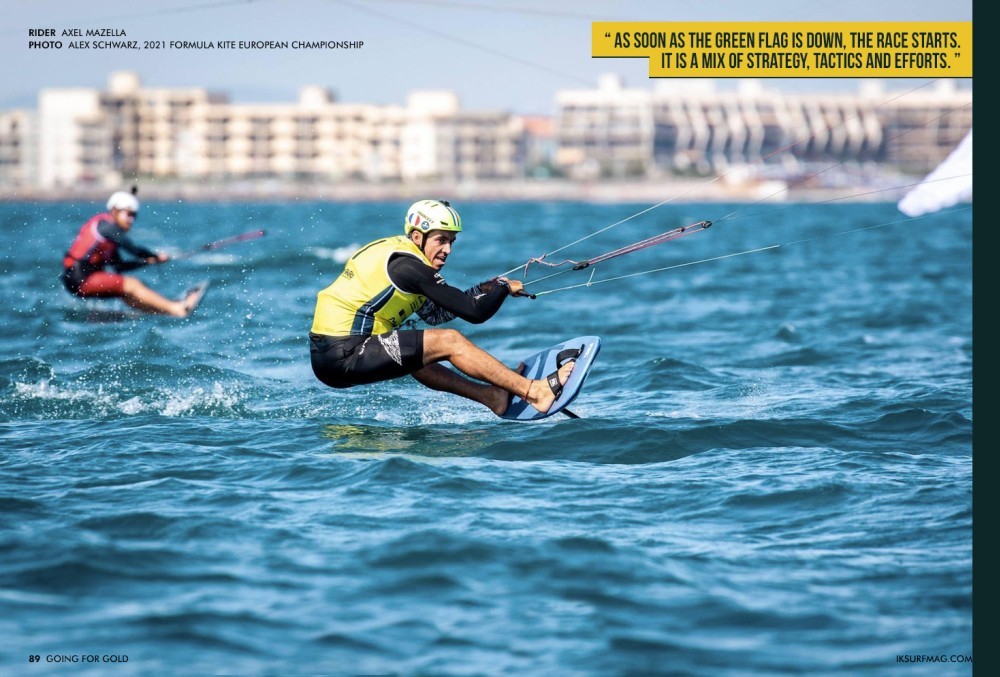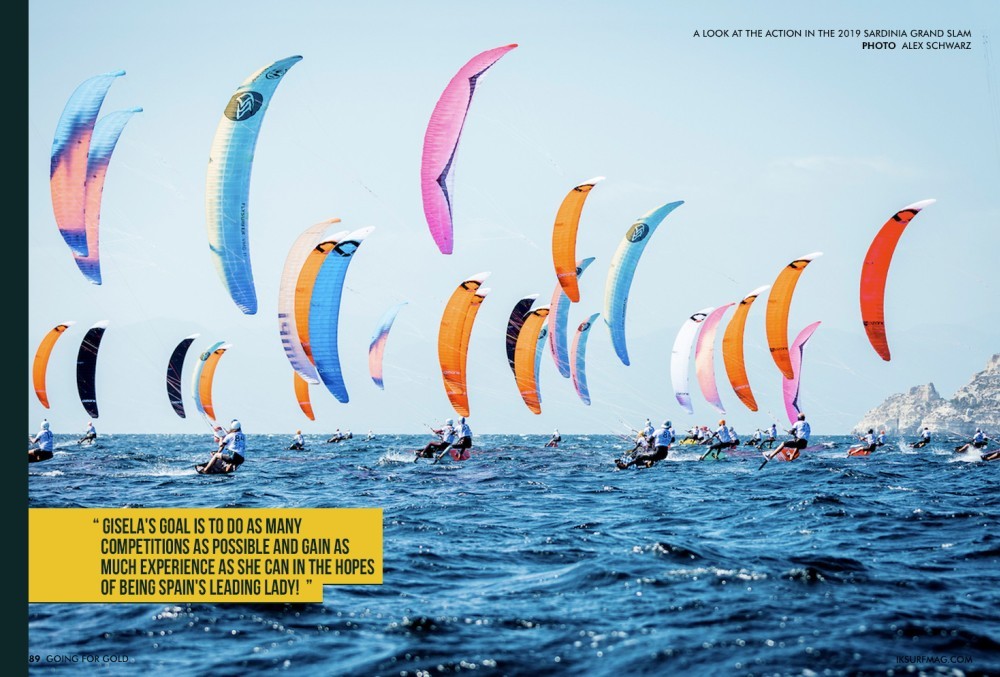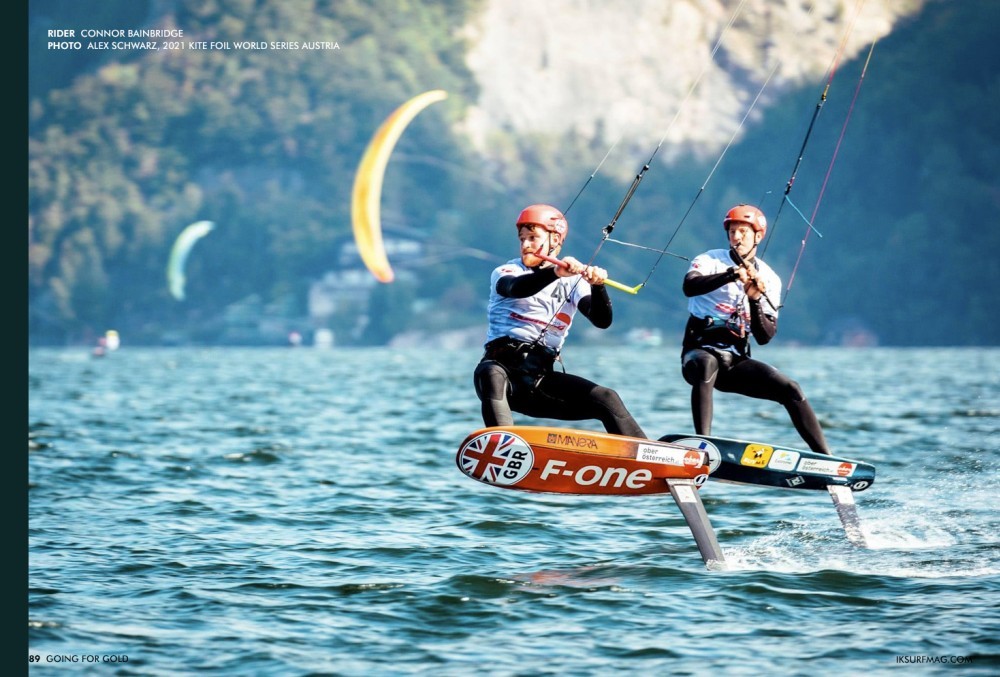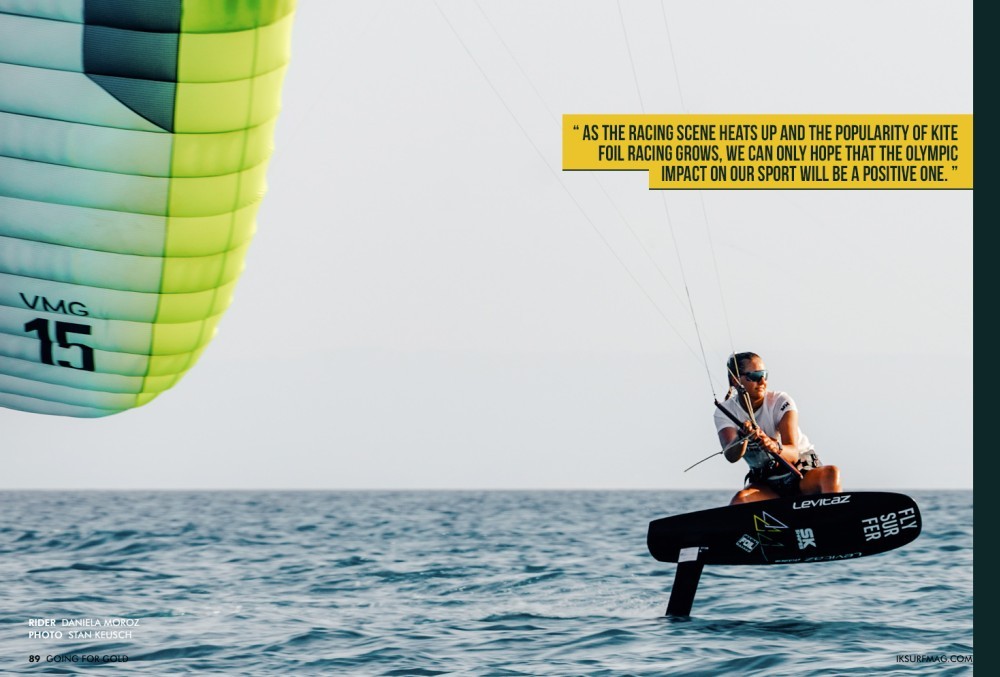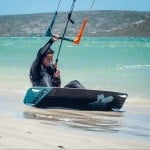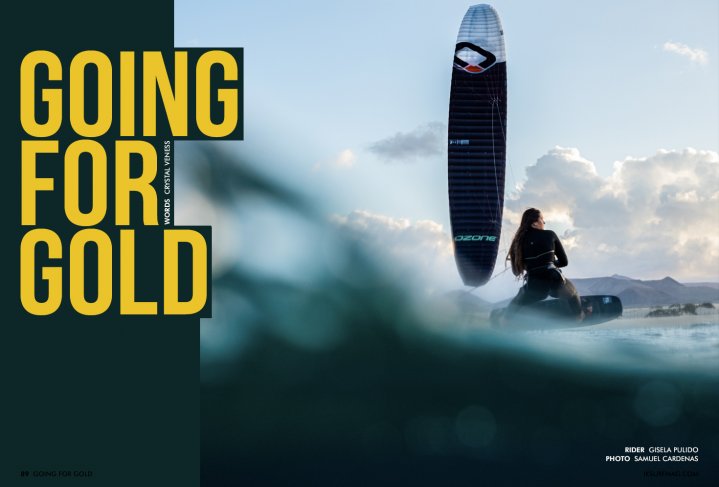
Going for Gold
Issue 89 / Tue 5th Oct, 2021
The Olympics are coming, and the race is on! With riders battling it out on the racecourse and brands toiling away behind the scenes to create the fastest foils in the world, Paris 2024 is sure to be an epic event. Learn more about the world of racing in this exclusive article!
Kiteboarding as an Olympic sport? It's kind of a big deal. Zeus himself would be in awe of our modern chariots of foil.
Let us not forget, however, that this is not our first rodeo. There are two gold medals out there, which came after a blazing battle on twin tips in the Buenos Aires Youth Olympic Games in 2018. Italy's Sofia Tomasoni and Dominican rider Adeuri Corniel were the first to achieve Olympic glory on the global stage, standing atop the podium after proving to be the fastest in the fleet.
It's not the first, and it almost certainly won't be the last. It's been three years since the world - or, at least, the part of the world that tuned in to the YOG - got their first introduction to kite racing. We're relatively sure more of the outside world saw kiting in Season 3 of Formula 1: Drive to Survive when Romain Grosjean front rolled his way into our hearts before stepping into his chariot of fire on the circuit in Bahrain, but I digress. It will be three more years until Paris 2024, and the race format has already changed considerably. Twin tips are out, and foils are in!
Initially, races competed in pairs, with one woman and one man participating in a relay race, where transition strategy is key. The recent confirmation that two separate medals would be up for grabs was a relief for the foil racing community. Relay races are off the calendar, and we're curious to see what other developments we'll see in the next few years.
One of the most significant factors, outside of the riders themselves, is the gear. Regulation is a must in competitive sports. In Beijing 2008, when swimsuit technology was getting too advanced and giving competitors an unfair advantage, full-body suits and swimwear with shiny high-tech coatings were banned from swimming events. Let's not even get into the whole women's beach volleyball uniform fiasco from Tokyo 2020. From women not being allowed into the Olympics until 1900 until today, when there are rules on how teeny their bikinis must be, things have sure changed!
Bringing it back to kiting, in the old days (as in, a few years ago) of foil racing, you'd see a diverse mix of ram air kites and leading-edge inflatables. There'd be foils and foil boards of every shape and size. This laissez-faire approach made the sport accessible to most, but as this segment of the sport grew and gained credibility, so have the regulations.
Now, the IKA has a strictly defined set of requirements for equipment, with only five kite models approved for the Olympic Games. The registration and production requirements are so great that several kite and foil manufacturers have simply opted out, while brands like FLYSURFER, Ozone, F-One, Flymaax, and Aeros have charged ahead, being the only kite brands approved for competition. With race gear constantly evolving, the race behind the scenes at the factories is nearly as intense as the one on the water!
Speaking of on the water, this one is a little easier to understand. Who is on the racecourse, and which of these prize ponies are we putting our money on?! As the racers prepare for the Sardinia Grand Slam - the biggest Kite Foil World Series event in 2021 - we've reached out to a few of the athletes to get some insight on how it all works and how they're handling the pressure of becoming one of the 20 men and 20 women going for gold in Paris!
First, what's going on?! We asked racer Axel Mazella from France how he would explain kitefoil racing to someone who had never seen a race before. The man must know how we feel about car analogies! "I always compare Kite Foil racing with Formula 1 racing; We are racing on the same system, supported by kite and foil brands. Every competitor is on the start line together, waiting for the green flag. Everyone tries to find the best starting position. As soon as the green flag is down, the race starts. It is a mix of strategy, tactics and efforts. We all have to do the same course. The first one who crosses the line wins the race. The difference is, we have 5 to 6 races scheduled per day across 4 or 5 days! So we need to be consistent for the whole event!
The UK's Connor Bainbridge added some more detail, explaining, "We usually complete 2-3 laps a race depending on the wind before reaching a finish line which is usually just off the beach. An event of 5 days has between 16-21 races. All scores are tallied, and the person with the lowest points wins. The racing is incredibly close, with riders often separated by less than a metre, which is a great spectacle when travelling at 40 knots towards the finish line."
If you're keen to tune in to a race, you can find the schedule on the IKA website. However, you'll see two different types of events on the calendar; Formula Kite and KiteFoil World Series. Brainbridge tells us the difference, "The Formula Kite tour is the Olympic discipline, using approved equipment. You can only race on four kites, one foil and one board per event. In the World Series, the equipment is completely open. This series of events will decide the open class World Champion at the end of the year. I mainly use these events as training events to test new gear to decide what I will use for major Formula Kite events."
A familiar face on the racing tour is Gisela Pulido, who earned her stripes in kiteboarding as a Freestyle World Champion. Gisela switched to kite foil racing a few years ago and has been fully focused ever since. Will she be competing at the Olympics? Each country will likely use Formula Kite events to help select their athletes, but every country will have unique selection criteria which remain to be confirmed. However, it looks clear that only one man and one woman will represent each country. Gisela's goal is to do as many competitions as possible and gain as much experience as she can in the hopes of being Spain's leading lady!
The one athlete per gender per country rule will mean some heated competitions over the next few years. In France, the race for first place is a tight one. Alex Mazella shares some insight on the race, "We just came back from Austria where I fought a lot with a Théo De Ramecourt, a French friend and a big competitor. Benoit Gomez is also super strong, and Denis Taradin, who won the first stop in Gizzeria, in Italy. We're going to have for sure a tight race."
Over in the USA, it's almost a surety that Daniela Moroz will be representing Team America for the women; she has been dominating on her FLYSURFER VMG's. We spoke to Daniela a while back, and she took us through how she gets in the zone for an event. "In my training, I focus on the variables I can control, like my physical fitness or my gear, and then also train myself to be as adaptable as possible. Because there are so many uncontrollable variables in our sport, it's essential to adapt to different wind conditions, currents, gear breaking, tangles, and so on... There's going to be all kinds of crazy stuff that happens during an event, and even when you're not doing your best, the best thing you can do is stay positive and remember that you're there to have fun. That takes a lot of mental preparation."
As the racing scene heats up and the popularity of kite foil racing grows, we can only hope that the Olympic impact on our sport will be a positive one. While it's definite that the business side of our sport will benefit from kiteboarding reaching a wider audience, there is a question mark over the impact on crowds and safety at our local kite spots. Luckily, we've got a few years until we find out for sure! Until then, we'll keep you posted on what's happening in the race for 1st place!
By Crystal Veness
Editor at IKSURFMAG, Crystal Veness hails from Canada but is based in South Africa. When she isn't busy kitesurfing or reporting on the latest industry news for the mag, she is kicking back somewhere at a windy kite beach or working on creative media projects.




